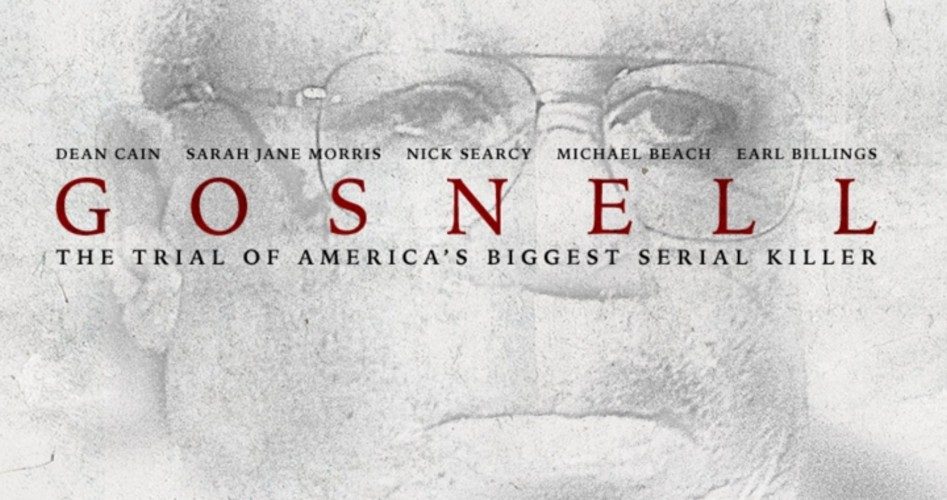
The abortion horror story that mainstream media and Hollywood tried to ignore will finally get its grand debut on the big screen on October 12. The movie, Gosnell: The Trial of America’s Biggest Serial Killer, is set to open in 700 theaters around the country, revealing the account of the trial of Philadelphia’s infamous abortionist, Kermit Gosnell.
Having raised $2.3 million through crowdfunding on Indiegogo in 2014, the film’s producers, Phelim McAleer and Anne McElhinney, have been attempting for nearly four years to bring it to theaters. “It’s a story that needs to be told fairly and we’ve done just that,” claims McElhinney, going on to say, “the cover-up stops here.”
Gosnell, who has owned and operated abortion facilities in Philadelphia since the 1970s, was employing extraordinarily barbaric tactics in an industry already conceived in death and fraught with gruesome procedures. His clinic, the Women’s Medical Society, also known as his “house of horrors,” was raided by authorities on February 18, 2010 due to suspicion of illegal drug prescription use after an investigation lasting months. The investigation brought to light the suspicious death of a patient, Karnamaya Mongar, and the raid revealed much more than the illegal drug use already suspected. In a report of the Grand Jury, the unbelievable account of some of the findings were as follows:
When the team members entered the clinic, they were appalled, describing it to the Grand Jury as “filthy,” “deplorable,” “disgusting,” “very unsanitary, very outdated, horrendous,” and “by far, the worst” that these experienced investigators had ever encountered. There was blood on the floor. A stench of urine filled the air. A flea-infested cat was wandering through the facility, and there were cat feces on the stairs. Semi-conscious women scheduled for abortions were moaning in the waiting room or the recovery room, where they sat on dirty recliners covered with blood-stained blankets. All the women had been sedated by unlicensed staff — long before Gosnell arrived at the clinic — and staff members could not accurately state what medications or dosages they had administered to the waiting patients. Many of the medications in inventory were past their expiration dates … surgical procedure rooms were filthy and unsanitary … resembling “a bad gas station restroom.” Instruments were not sterile. Equipment was rusty and outdated. Oxygen equipment was covered with dust, and had not been inspected. The same corroded suction tubing used for abortions was the only tubing available for oral airways if assistance for breathing was needed….
Fetal remains [were] haphazardly stored throughout the clinic — in bags, milk jugs, orange juice cartons, and even in cat-food containers…. Gosnell admitted to Detective Wood that at least 10 to 20 percent … were probably older than 24 weeks [the legal limit]…. In some instances, surgical incisions had been made at the base of the fetal skulls. The investigators found a row of jars containing just the severed feet of fetuses. In the basement, they discovered medical waste piled high. The intact 19-week fetus delivered by Mrs. Mongar three months earlier was in a freezer. In all, the remains of 45 fetuses were recovered … at least two of them, and probably three, had been viable.”
On January 19, 2011 Gosnell was arrested and charged with eight counts of murder — seven babies whom he was charged with killing after their live births, and Karnamaya Mongar, a 41-year-old refugee who died from lethal doses of anesthesia and painkillers at the hands of Gosnell and his employees. Ironically, if the babies he was charged with killing had died during the actual abortion procedures, as opposed to being born alive as a result of botched abortions and then killed, he would not have been charged for murdering them — just as he was not charged for murder for the many preborn children he “successfully” aborted.
Two years later in May of 2013, after four counts of murder had been dropped from the charges, Gosnell was convicted of three counts of murder and one count of involuntary manslaughter, along with a multitude of lesser counts. After reaching a deal with the prosecutors, he was sentenced to life in prison without parole.
The trial and convicton of “Dr.” Gosnell went largely unnoticed by the public, as it received barely a nod from the mainstream media. According to McElhinney, “Most Americans have never heard the name Dr. Kemit Gosnell because the mainstream journalists chose not to cover the trial.” She went on to say, “The movie is as much an exposé of the media as it is of abortion… The media who ignored the story will have to explain to millions of people who will see the movie why they censored this story.”
According to Breitbart.com, the movie addresses how the “clinic avoided scrutiny because bureaucrats and media looked the other way in order to avoid dealing with criticism from the abortion industry and its friends.” The trial finally received some attention when a journalist published a picture of the empty benches in the courtroom that were reserved for the media.
Actor Nick Searcy, director of the Gosnell movie, adequately sums up what seems to be the ambition of this independent film: “No matter what your stance is on abortion, you will have a more informed opinion after you see Gosnell.”
Here is the movie trailer:
https://www.youtube.com/watch?v=qENMr_9xzWc
Graphic at top: gosnellmovie.com



